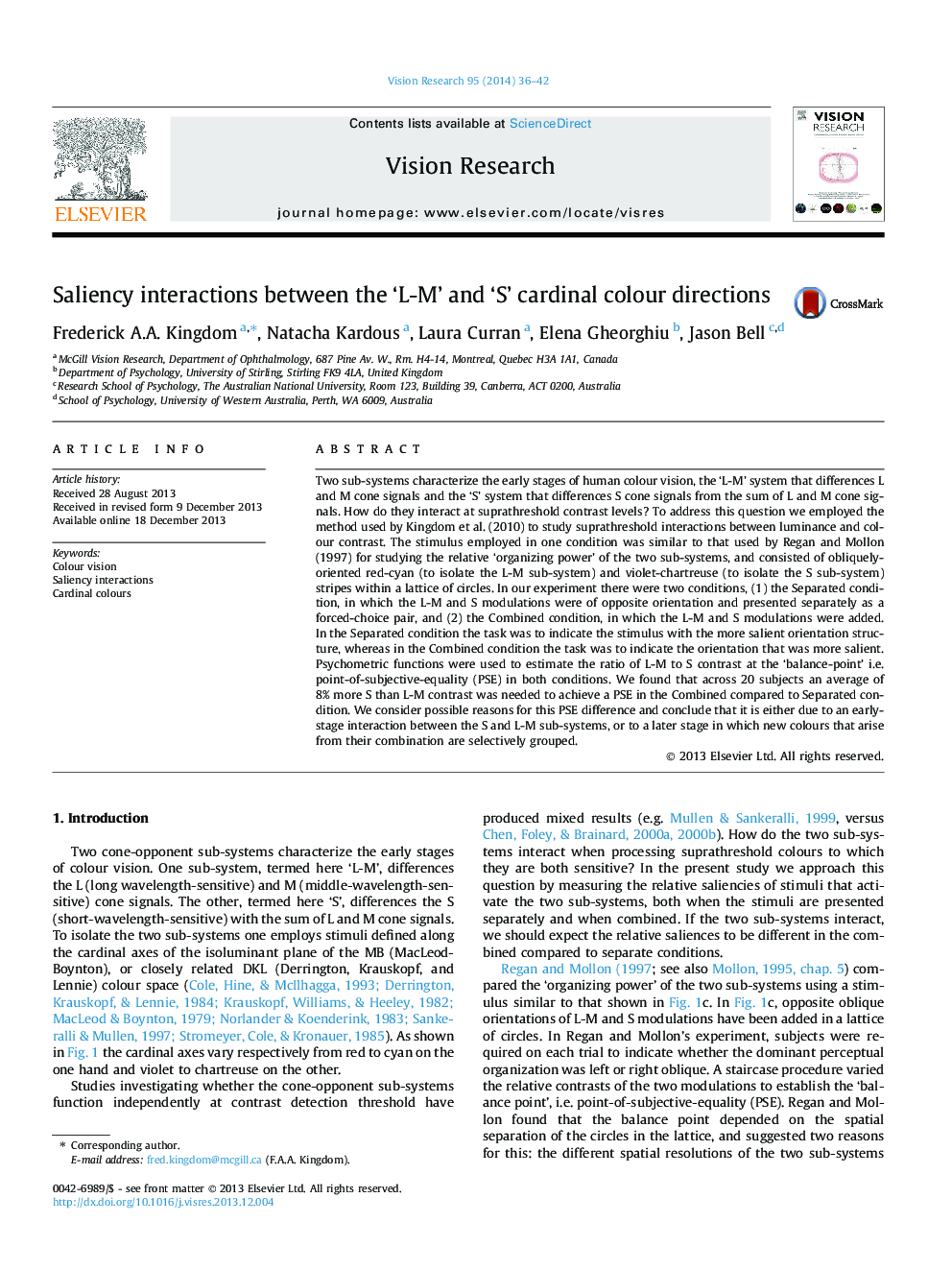| Article ID | Journal | Published Year | Pages | File Type |
|---|---|---|---|---|
| 4033735 | Vision Research | 2014 | 7 Pages |
•First controlled measures of suprathreshold saliency interactions between red–green and blue–yellow stimuli.•Red–green contrast weighted more than blue–yellow contrast when the two interact.•Novel use of lattice patterns as stimuli.
Two sub-systems characterize the early stages of human colour vision, the ‘L-M’ system that differences L and M cone signals and the ‘S’ system that differences S cone signals from the sum of L and M cone signals. How do they interact at suprathreshold contrast levels? To address this question we employed the method used by Kingdom et al. (2010) to study suprathreshold interactions between luminance and colour contrast. The stimulus employed in one condition was similar to that used by Regan and Mollon (1997) for studying the relative ‘organizing power’ of the two sub-systems, and consisted of obliquely-oriented red-cyan (to isolate the L-M sub-system) and violet-chartreuse (to isolate the S sub-system) stripes within a lattice of circles. In our experiment there were two conditions, (1) the Separated condition, in which the L-M and S modulations were of opposite orientation and presented separately as a forced-choice pair, and (2) the Combined condition, in which the L-M and S modulations were added. In the Separated condition the task was to indicate the stimulus with the more salient orientation structure, whereas in the Combined condition the task was to indicate the orientation that was more salient. Psychometric functions were used to estimate the ratio of L-M to S contrast at the ‘balance-point’ i.e. point-of-subjective-equality (PSE) in both conditions. We found that across 20 subjects an average of 8% more S than L-M contrast was needed to achieve a PSE in the Combined compared to Separated condition. We consider possible reasons for this PSE difference and conclude that it is either due to an early-stage interaction between the S and L-M sub-systems, or to a later stage in which new colours that arise from their combination are selectively grouped.
